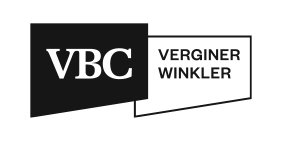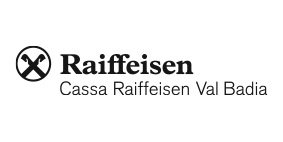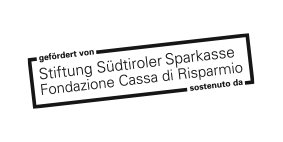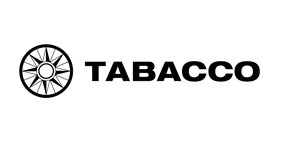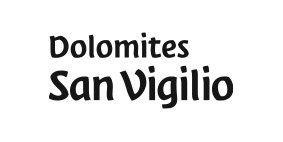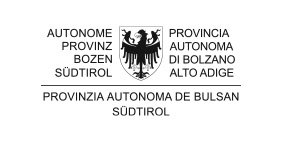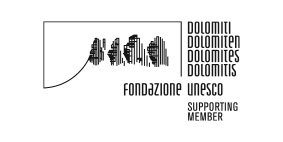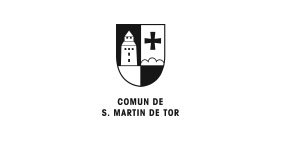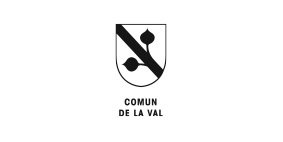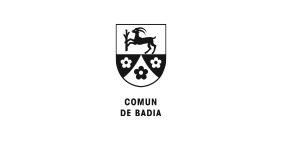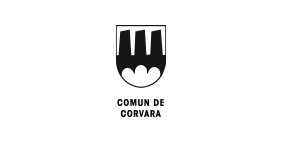The fifth edition of the Biennale SMACH.2021 puts the word ‘FRAGILE’ as it’s main focus. What do frailty and fragility mean in our world? After all, being fragile can mean a lot. Headlines say the current pandemic has shone a light on the fragility of institutions and globalisation; while according to the Oxford dictionary, “delicate”, “dainty” and “fine” are synonyms of fragile. The world and peace are fragile – but so are human relations at times.
But fragility contains other values, too: sensitivity and tenderness, friendliness and dignity – all values which open the door to different emotions, feelings, and existences.
Why should we talk about fragility? Such a narrative enables us to think about the lighter and darker sides of human existence in the first place, and because at present we are being unequivocally shown how fragile we, our world, and everything around us is.
〉 Ladin
La cuinta ediziun de SMACH mët le focus sön la parora „FRAGILE” (ladin: delicat, fragil). Mo ci ó pa pordërt dí delicatëza y fragilité te nosc monn? „Fragil“ pó orëi dí tröpes cosses aldedaincö. La pandemia mostra sö la deblëza dles istituziuns y dla globalisaziun, êl scrit söles prömes plates di foliec. Aladô dl dizionar é sensibilité, finëza y delicatëza sinonims de fragilité. Fragil é le monn, la pesc, mo ince les relaziuns danter les porsones pó val’ iade ester fragiles.
Do la fragilité él valurs ascognüs – sensibilité y delicatëza, cordialité y dignité – dilan a chi ch’i podun s’imaginé les manires da vire di atri, capí canche zacai á la bona o ria löna, coch’ai se sënt.
Ciodí messesson pa fá n discurs sön la fragilité? Ciodiche ma chësc nes dá la poscibilité da ponsé do sön les perts lominoses y scüres dl’esistënza dla porsona y ciodich’al nes vëgn propi sëgn mostré te na manira tlera tan fragil che nosc monn é, che nos sun y döt ci ch’i un incëria.
〉 Italiano
La quinta edizione di SMACH mette al centro la parola „FRAGILE“. Ma che cosa significa “fragilità” oggi? “Fragile” può avere tanti significati. La pandemia mette in luce la fragilità delle istituzioni e della globalizzazione – ne leggiamo costantemente sulle pagine dei giornali. Secondo la Treccani evanescenza, debolezza e delicatezza sono sinonimi di fragilità. Fragile è il mondo, la pace, ma anche i rapporti interpersonali possono essere, talvolta, fragili.
Dietro alla fragilità si nascondono dei valori: sensibilità e delicatezza, amicizia e dignità, grazie ai quali ci sappiamo calare in stati d’animo, umori e momenti dell’esistenza.
Perché dovremmo parlare di fragilità? Perché consente - in primis - di riflettere sui lati chiari e oscuri dell'esistenza umana e perché rappresenta l’inequivocabile prova della fugacità stessa del mondo contemporaneo, di noi stessi e di tutto ciò che gravita attorno a noi.
〉 Deutsch
Die fünfte Edition von SMACH stellt das Wort „FRAGILE“ (dt. fragil) in den Mittelpunkt. Doch was bedeutet Zerbrechlichkeit und Fragilität in unserer Welt? „Fragil“, das kann heute vieles meinen. Die Pandemie zeige die Fragilität der Institutionen und der Globalisierung auf, hieß es auf den Titelseiten der Zeitungen. Empfindlichkeit, Feinheit und Zartheit sind nach dem Duden Synonyme von Fragilität. Fragil ist die Welt, der Frieden aber auch menschliche Beziehungen können mitunter fragil sein.
Hinter der Fragilität liegen Werte verborgen: Sensibilität und Zartheit, Freundlichkeit und Würde, dank derer wir uns in Gefühlszustände, Stimmungen und existenzielle Daseinsweisen hineinversetzen können.
Warum sollten wir einen Diskurs über Fragilität führen? Weil dieser ein Nachdenken über die hellen und dunklen Seiten menschlicher Existenz überhaupt erst möglich macht und weil uns derzeit unmissverständlich vor Augen geführt wird, wie zerbrechlich unsere Welt, wir selbst und alles, was uns umgibt, ist.
SMACH.2021 WINNING ARTISTS
THE JUDGING PANEL
〉 Gehard Demetz
Gehard Demetz is an artist from Val Gardena. He attended the professional school of Selva di Val Gardena and spent some training periods at the International Academy of Salzburg. He worked as a teacher of sculpture at the professional school of Ortisei and since 2007 has dedicated himself exclusively to his work as a sculptor. In 2005 he began to collaborate with the Rubin gallery in Milan. A report in the newspaper "Herald Tribune" brings him closer to the reality of the USA: his first American show takes place in 2009 at the gallery Greenberg - Van Doren. In 2011, the Jack Shainman Gallery in New York is interested in his work, which offers the works of Demetz in the most prestigious international exhibitions: Art Miami Basel, Armory Show NY, Frieze NY, Art Basel. Since 2011 he has exhibited in several national and international museums including Museum Bochum, MOCA Virginia Museum of Contemporary Art and MACRO of Rome. He lives and works in Selva di Val Gardena.
www.geharddemetz.com
〉 Giacinto Di Pietrantonio
Di Pietrantonio was founder of AMACI and from 2003 to 2014 was a member of the Board of Directors of AMACI (Association of the Italian Museums of Contemporary Art) and MUSEION in Bolzano. He was the curator of the Advanced Course in Visual Arts at the Antonio Ratti Foundation in Como from 1995 to 2004. He was the director of I love Museums, the association’s periodical, as well as of the contemporary art magazine Perché/?. In 2005, he was a commissioner at the Quadriennale in Rome and served as a consultant to the MiArt Fiera Internazionale d’Arte in Milan from 2008 to 2010. From 201-2017 He was a member of the Advisory Committees of the Center for Contemporary Art Luigi Pecci in Prato. He is a member of the Advisory Committees of CIAC (Italian Center for Contemporary Art) in Foligno., Umbria. In 2008 the Rector of the University of Bologna Pier Ugo Calzolari gave Di Pietrantonio a career achievement award promoted by AMA (Associazione Almae Mater Alumni), a university organization. In 2016 he receives the Culture Capitan’s years award.
〉 Guus van den Hout
Guus van den Hout (1960) studied history of art at the University of Leiden. From 1985 thru 2010 he worked for museums, as a director/curator of Museum Our Lord in the Attic in Amsterdam (1990-2001) and as a managing director of Museum Catharijneconvent in Utrecht (2001-2010). In 1998 Van den Hout worked as a visiting director at the Metropolitan Museum of Art in New York City. From 2002 thru 2014 he was an advisor to the Papal Commission of Cultural Heritage. Van den Hout cooperated with important institutions all around the world in the field of cultural heritage, creating major exhibitions or backing new initiatives.
Since 2010 Van den Hout has been active as an independent curator, advisor and intermediary in the sale of important works of art. In 2017 he realised the first biennale 'Art in the Holy Triangle' in Oosterhout. For this he worked closely together with 27 contemporary artists who created new work especially for this project. At this moment Van den Hout advises several museums and cultural heritage institutions about their art policy.
Instagram: guusartandadvice
〉 Julia Bornefeld
Julia Bornefeld (Kiel, 1963) is a German artist, who lives in Berlin and Brunico. She studied at the Academy of Fine Arts in Venice and at the Akademia Likovna Umjetnost in Ljubljana. Bornefeld expresses himself through painting, photography, installations and video, but his fundamental language of reference is dance. Biographical and mythological references are often linked by Bornefeld to the themes of the feminist debate of the sixties and seventies of the twentieth century. His works are in the collection of the Museion in Bolzano and in the Tiroler Landesmuseum Ferdinandeum in Innsbruck.
www.juliabornefeld.com
〉 Giulia Ferracci
Giulia Ferracci (Rome, 1981) is an art curator based in Rome. She collaborated with MACRO-Museo of Contemporary Art of Rome (2004-2006) and Ministry of Cultural Heritage-DARC (2006- 2009). Since 2010 she has been working at the MAXXI-National Museum of XXI Century Arts in Rome, where she has curated numerous catalogs, monographic and collective exhibitions including: Gino De Dominicis. The Immortal (2010); William Kentridge. Vertical Thinking (2012); Clemens von Wedemeyer. The Cast (2013); MAXXI AWARD (2012 - 2014 - 2016); MAXXI BVLGARI PRIZE (2018 - 2020); Zerocalcare. Digging ditches - feeding crocodiles (2018). She was co-curator with H.U. Obrist and G.Kvaran of Indian Highway (2011); with E. Motisi of The Indepedent (2013-2020); with H. Hanru of the exhibitions: Huang Yong Ping. Bâton Serpent (2014), Jimmie Durham Sound and Silliness (2016), Home Beirut. Sounding the Neighbors (2017); with Z Badovinac Bigger Than myself. Eroic Voices from exYugoslavia (2021). Among the exhibitions as independent curator Curated By, Vienna 2017, Senza santi Senza Eroi.
www.maxxi.art

















